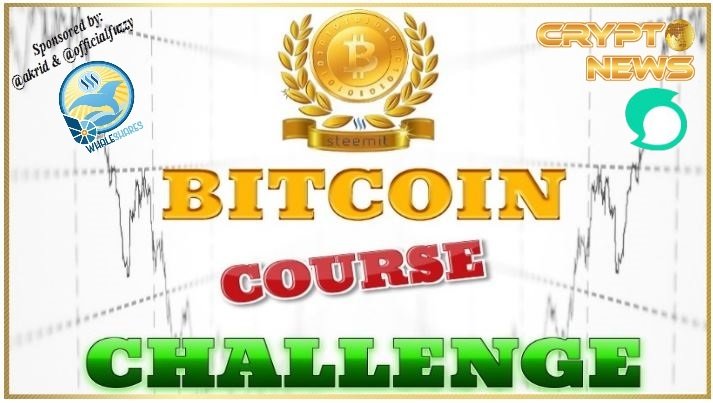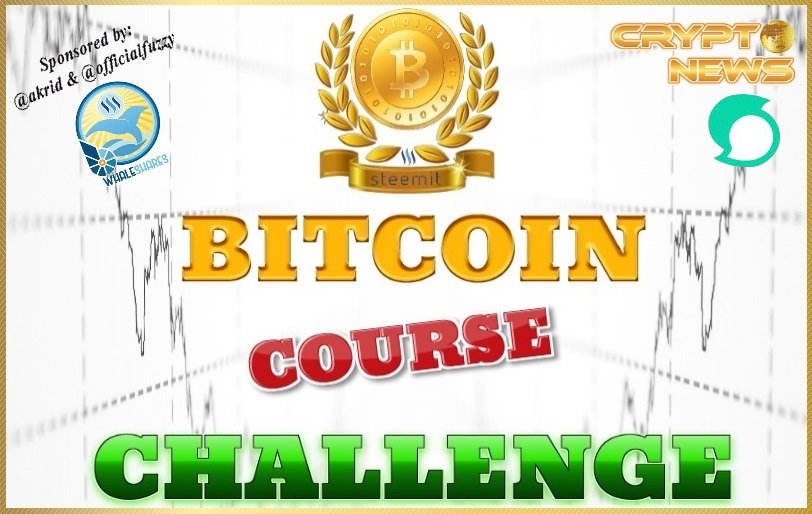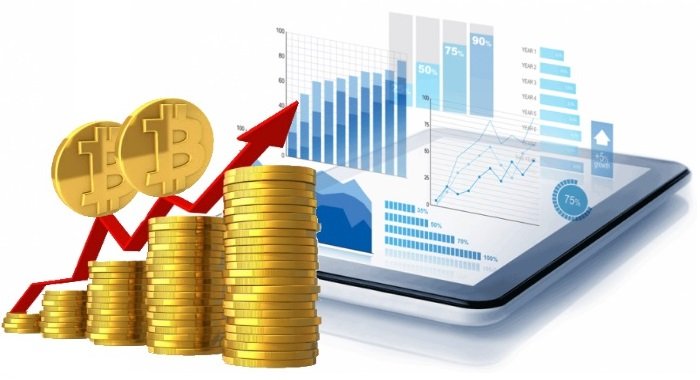
- BITCOIN COURSE CHALLENGE Week 5!
- Goldman Sachs CEO sees great Potential in Crypto Currencies!
- CryptoShuffler swaps Addresses in the Cache!
- Devcon 3: Ethereum Casper takes Shape!
- FundRequest: Decentralized Open Source Platform!
- Coinbase: GDAX issues Guidelines for Token listing!
- Bitcoin Course Analysis for Week 44/2017!



Today starts the 🏆BITCOIN COURSE CHALLENGE Week 5🏆
 From this week on you can also win 40 Hairshares!
From this week on you can also win 40 Hairshares!
The RULES are simple, write the Bitcoin Price USD for the next Sunday 13:00 UTC time and your Bitshares or OpenLedger account name ( like this $ 4,459.44 danyelk1 ) in the comment section of this post. I will accept your answers till Friday 13:00 UTC time.
The one who has the right Bitcoin price or has the closest guess will be the WINNER.
The WINNER will be announced next Sunday.
If you are new with Whaleshares please click HERE!
If you are new with Hairshares please click HERE!
To download Bitshares or OpenLedger wallet please click HERE!
For more information and questions about Whaleshares and Hairshares go to the WHALSHARES DISCORD CHANNEL!
Have fun and show us your Bitcoin forecast skills
☘ Best of luck to all of you ☘
BIG THANKS go to @akrid & @officialfuzzy who make that all happen by sponsoring the BITCOIN COURSE CHALLENGE!

@zararina you are the WINNER of the BITCOIN COURSE CHALLENGE Week 4!!!


The CEO of Goldman Sachs Lloyd Blankfein sees great potential for the future of crypto currencies. This he emphasized this Thursday to the American news channel Bloomberg. Top dog Bitcoin is still filling him with discomfort.
The bank's Sustainable Finance Innovation Forum took advantage of Lloyd Blankfein this week to shed light on its reluctance to use Bitcoin:
In an interview with Bloomberg, the 63-year-old emphasized that Bitcoin was filling him with the usual level of discomfort that several technical innovations have brought in the past. Yet he has learned that many of these things have distinguished themselves, despite his initial rejection. So he relativized his negative attitude and led instead to the question of possible Bitcoin stock market transactions further:
He was not willing to invest, but he did not want to turn his back on the idea. Therefore he shows himself open for crypto currencies, according Blankfein.
Goldman Sachs as game changer?
The US CME Group, one of the world's largest exchanges and the world's largest derivatives exchange, announced this week that it intends to expand its business to the crypto sector.
Goldman Sachs will still not follow suit at first, as Blankfeins comments in the interview. A fundamental rejection, however, seems a long way off. It was not until October that the bank told the Wall Street Journal that they were considering opening up for crypto currencies
The New York-based global investment banking firm serves primarily as a financial services firm for large corporates and institutional investors. This would give the bank a pioneering role in opening up future crypto business areas. An entry by Goldman Sachs would be rated as a real game changer.
With Blankfein's assessment, the trend of recent months has been confirmed: while the Bitcoin price skyrockets with many pessimism, big money and conventional banks are beating Bitcoin.
In addition, the list of well-known Bitcoin skeptics seems to grow almost daily. After JPMorgan Chase CEO Jamie Dimon accused Bitcoin of "fraud" in September, numerous well-known Cryptocurrency economic figures turned cold. For example, Harvard professor and former IMF chief economist Kenneth Rogoff spoke of a Bitcoin bubble last month, while Saudi Prince and major investor Al Walid likened Bitcoin to scam group Enron.
However, more and more tax authorities and central banks are realizing the market significance of crypto currencies. In response to the loud skeptic voices, IMF head Christine Lagarde called on central banks to take crypto money seriously last month.


Even though it is unlikely that anyone will buy a pizza during the last all-time high, it happens that you buy a lunch with Bitcoin. The destination address is quickly entered into the text field via copy and paste - but the coins never arrive at the actual recipient.
Not on the radar
The Trojan called CryptoShuffler is not new. According to a report by Kaspersky the burglar since 2016 drifting mischief. His target is users of crypto currencies.
Unlike the well-known Cryptolocker, CryptoShuffle is not noticeable. Once captured, the Trojan reads the clipboard and waits for the right moment. Entering an address will detect the malware and swap it in no time. Whether Bitcoin, Ethereum, Litecoin, Monero, Zcash or Dogecoin, the developers have adapted the software to every situation.
Quick money
The Kaspersky Lab stated that the attackers have already stolen 23 Bitcoins with this method (currently around 145,000 euros). The other currencies are also expected to turn around in the range of 10,000 euros.
Although CryptoShuffle peaked in 2016, its activity seems to be picking up again since mid-2017. Since crypto currencies are largely pseudonymous, sometimes anonymous, they are in the sights of many hackers. In addition to crypto exchanges, normal users are affected as well. We therefore recommend checking addresses twice. Due to the structure of addresses it is worthwhile to look at the first four and the last four characters of the address. The chance that the characters in between are different is incredibly low.
In addition, I recommend a general Internet hygiene: do not call dodgy links and also avoid downloading files from strangers. Precisely because the software reveals itself only when it changes addresses, it is extremely difficult to find.


The Ethereum upgrade Casper is designed to make the blockchain more effective and democratic. Using proof-of-stake software will make it easier for users to mine new tokens. At Devcon 3, the topic was frequently discussed.
At the annual Ethereum conference, one topic was omnipresent: Casper, the widely-anticipated proof-of-stake consensus for Ethereum. The planned upgrade is intended to make access to the blockchain more accessible to individual users. The hope of the developers is to make the mining of new tokens more attractive and easier. Casper, in contrast to the proof-of-work method with the proof-of-stake method, should be cheaper and faster.
The idea behind it is that users no longer need to invest money in mining software and computers. Rather, they should invest capital and make calculations to validate transactions. Thus, users could vie for protocol rewards. Unlike the proof-of-work, it is not the share of computational capacity that determines whether miners receive crypto currencies. Rather, it's the percentage of the total tokens in a network that determines whether the owners get more. The so-called consensus mechanism ensures that one agrees on an identical version of the blockchain. The selection of miners follows the random principle. One of the already existing tokens is selected, the owner of which finally receives the validation. So if you have a high percentage of the total number of tokens, chances are better of winning the "raffle".
Not quite finished
The already announced at the last Devcon upgrade is not yet completed. Vitalik Buterin and Vlad Zamfir, both developers of the Ethereum Blockchain, are currently working on slightly different versions of Casper. However, Zamfirs has announced at this year's Devcon that its current version is faster and safer than the one originally presented. This had a more complicated blockchain structure and is therefore less applicable than the current version.
Zamfir's version is based on the GHOST protocol (Greedy Heaviest Observed Subtree). Transactions can be faster than before by changing the validation rules.


FundRequest is designed to create a platform that combines the benefits of open source software with those of blockchain technology. Members of the community can submit or accept offers to find software solutions.
The lack of (monetary) incentives, according to the developers in their white paper, is that open source projects are often unattractive to developers. The advantage that theoretically everyone has access to the source code and can develop and change it, therefore often falls by the wayside.
By combining it with Smart Contracts of the Ethereum Blockchain, the developers want to change this situation now. So developers should have the opportunity to post on FundRequest their current flawed software. They can then offer a reward for fixing the bugs. Programmers can try solutions and offer them to the respective companies.
Then all solutions are compared and the best is finally used and paid. The Ethereum Blockchain Smart Contracts automatically pay the reward. Thanks to the decentralized form of organization, the blockchain does not have to act as an intermediary.
However, without any human interaction, the system is not yet functioning. In cases of discrepancies, according to the developers, middlemen are then employed again, acting as mediators.
FundRequest rewards users with Skill Tokens
The platform also has something of a social network based on competition. So users who solve problems particularly efficiently, get so-called Skill Tokens. They are distributed to the winners of the tenders by the Skill Token Factory, another smart contract. The result is a platform-internal ranking system, which then again seems quite centralized.
The development of the platform was already similar to the program itself. In September of this year, FundRequest released an alpha version where users were invited to give feedback. There was also the possibility to submit suggestions for improvement and to fix found bugs. The first version of the platform will go online this month.
Disclaimer:
The information presented in this post is not a recommendation for purchase or sale. It is only an opinion of me the author. They serve merely to describe the project and are not to be understood as an investment analysis.


The Global Digital Asset Exchange (GDAX), the crypto exchange of blockchain company Coinbase, has issued guidelines outlining the conditions under which tokens will be listed on their platform in the future.
In the new digital asset framework, GDAX presents factors that are considered when it comes to whether new digital currencies will be included in the crypto exchange. The rules should therefore increase transparency, provide insights into the approach of GDAX and make it apparent to outsiders, which criteria are taken into account when selecting new tokens. These are generally formulated requirements for evaluating tokens. GDAX reserves the right to treat individual decisions with complete discretion.
Overall, GDAX lists six different criteria that should play a role in the selection of future tokens. For example, it is intended to check whether the constitution of the token can be reconciled with the mission and the values of GDAX by fulfilling the requirements of an open financial system that is available to everyone and can not be controlled by any central authority. The technological criteria include things like security, scaling, the consensus mechanism and the overall quality of the project and the team. Legal frameworks also play an important role in the consideration of listing a token because the token to be listed must meet certain standards in order to be offered legally.
Other criteria mentioned by GDAX relate to the market situation around the respective token. Thus, the offer in the form of liquidity and availability of the token and the possible demand are weighed before the decision. Finally, it is noted in which type of ecosystem the token is to circulate and what kind of token sales for the distribution of the token is considered. For this a precise evaluation of the white paper is consulted.
The crypto exchange GDAX is thus intended to ensure that all criteria are taken into account and also offer potential investors optimal conditions.


In an incredible rally, the price has risen to 6,492.65 EUR (7,544.13 USD) and is currently at 6,374.26 EUR (7,406.57 USD).
Image based on data from coinbase.com
Summary
- The Bitcoin price has gone up during the week.
- After reaching a new all-time high of 6,492.65 EUR (7,544.13 USD), the current rally was only slightly slowed.
- Most important short-term resistance is at the aforementioned all-time high of 6,492.65 EUR (7,544.13 USD), while the most important short-term support is 5,986.30 EUR (6,955.78 USD).
It makes you feel like you're back in the middle of the year: not a week goes by without a new all-time high. Since breaking through a triangle pattern, the course is racing to new highs and will neither find a stable plateau nor break. Since 2 November, the price has declined, but still follows an upward trend.
The MACD (second panel) fell almost below zero. Just above the zero line, however, the MACD line (blue) was able to climb above the signal (orange) again and has since risen again.
The RSI (third panel) stands at 59 and is thus bullish.
The analysis of the movements in the 60 mins. chart speaks a bullish language. The most important support in the 60 mins. chart is described by the dip on November 2nd and is at 5,986.30 EUR (6,955.78 USD). The most important resistance is described by the new all-time high and stands at 6,492.65 EUR (7,544.13 USD).
The long term course development
To estimate the medium and long-term price developments, we first look at the 240 mins. chart:
Image based on data from coinbase.com
We are not just following the upward channel that defines the month of October, but are currently well above it. The resistance of this upward channel is currently at the level of the 60 mins. chart shown supports.
The MACD is accordingly positive, but the MACD line is below the signal. The RSI is at 70 and is thus overbought. In the medium term, the situation is bullish. Beware, however, because of the overbought RSI, so the price should be closely monitored near the support. The most important support is defined by the support of the upward channel, which currently stands at 5,251.03 EUR (6,101.43 USD). The main resistance is the same as in the 60 mins. chart.
Let's take a look at the 1D chart:
Image based on data from coinbase.com
Also in the long-term presentation, the upward channel was broken to higher values. The price is currently well above the exponential moving averages of the last one or two months. The all-time high until October is only equivalent to the 38.2% fib retracement level. We note that we entered a rally in October, redefining the previous uptrend.
Accordingly, the MACD is not only positive, the MACD line is well above the signal. The RSI is completely overbought in the light of current developments at 83.
Overall, the long-term outlook is bullish from a technical perspective. The first major support is described by the breakthrough resistance of the upward channel and stands at 4,874.67 EUR (5,664.12 USD). In the case of a large consolidation, a fall of up to EUR 3,548.51 ($ 4,123.19), that is, except for support from the upstream channel, is plausible. Resistance can be the same as in the other charts. If you want to hear a long-term resistance or a target for the current rally in the current developments: According to Fibonacci retracement level this would be at 9,516.71 EUR (11,057.94 USD).
Disclaimer:
The course analysis is from the morning MUT time zone and can have changed since. The price estimates presented in this post are not a recommendation to buy or sell. They are merely an estimate of me.

I wish you all a lovely Sunday and a great start in the new week!!!
ⓁⓄⓥⒺ & ⓁⒾⒼⒽⓉ
Best regards
@danyelk
.gif)


